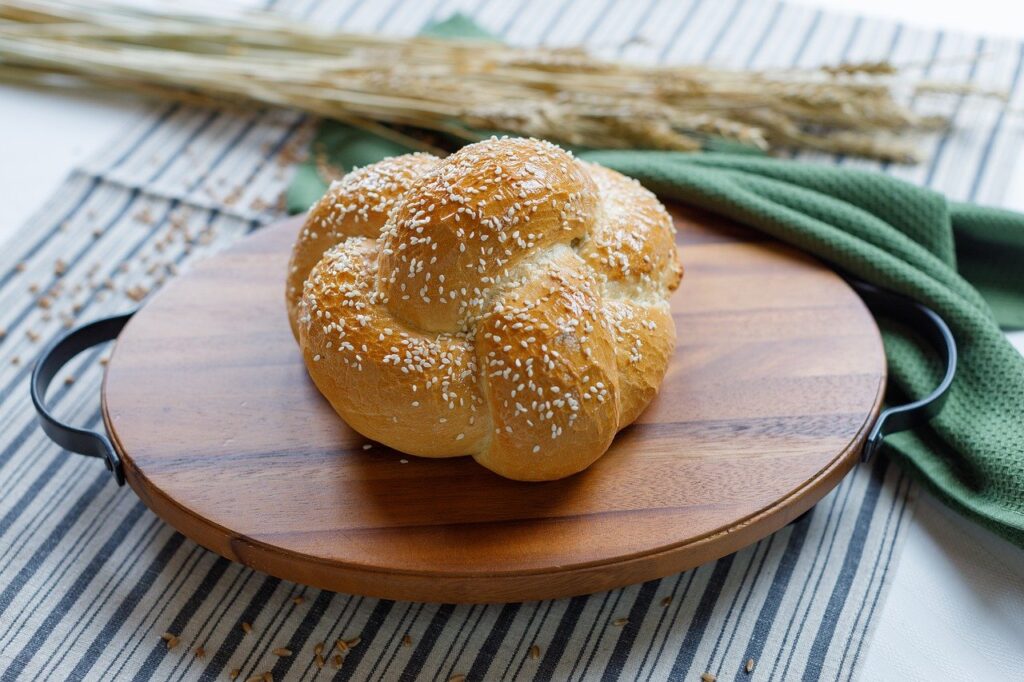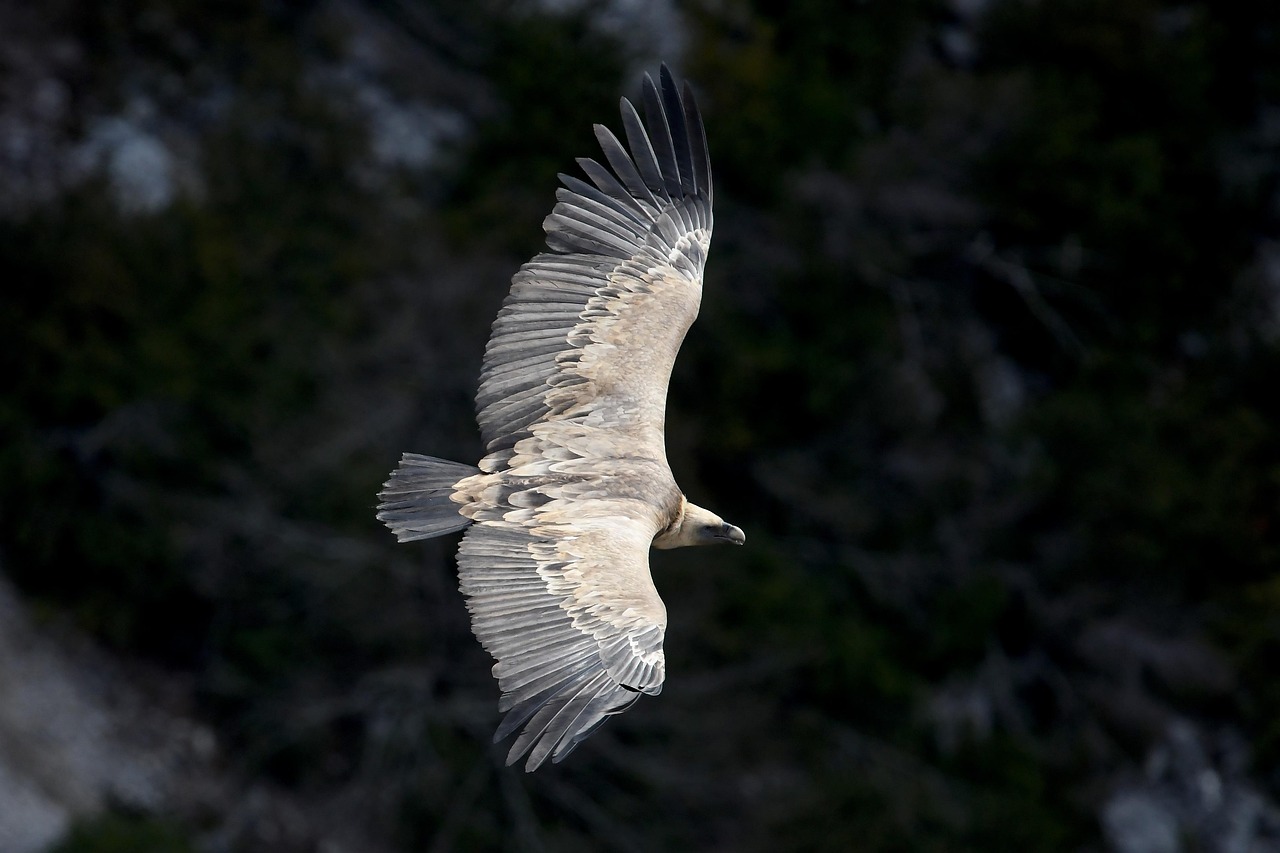The culinary traditions of the High Holy Days are laden with symbolism and puns, some, such as apple dipped in honey and round challot, being widely known.
“From the time of the Talmud, a fanciful combination of word play, visual association and flavors designated a whole series of foods as totems for the year to come,” wrote Ruth Abusch-Magder in her 1998 doctoral dissertation on domestic Jewish culture. “The head of a sheep or fish, like the round challah, was traditionally eaten because of its physical form. It symbolizes our desire to come out ‘ahead’ in the coming year. Dates, fenugreek, pumpkins and leeks were all eaten because of linguistic links between the Hebrew names of these foods and requests for the year to come. The puns are subtle and often stretch meaning and pronunciation, such as Gilda Angel’s blessing for leek: ‘Like as we eat this leek may our luck never lack in the year to come.'”
According to the same principle, some studiously avoid certain foods. These include nuts, because the Hebrew letters of the word for nut, egoz, have the same numerical value as the Hebrew word for sin, and garlic, because the Hebrew word for it, shum, also means “nothing.”
Of all these traditions, the most widely observed is that of the round challah, whose very form speaks volumes. It may even be the closest to universally practiced traditions among Jews, irrespective of their ethnic origins. What’s more, scholars theorize the round challah is the true form of the original round shewbread loaves which were kept on the Temple altar – 12 flat loaves for each of the tribes, in two stacks. It wasn’t until the 15th century that challot were made in any other shape.
“Then many German Jews adopted a new form of Sabbath bread, an oval, braided loaf modeled on popular Teutonic bread,” writes Gil Marks in The World of Jewish Cooking. “In some places, the Sabbath bread took on the biblical name challah. Eventually, this braided loaf … made its way eastward, becoming the most prevalent form of Sabbath bread among eastern Europeans.”
Although the style may have been adopted for its beauty, some justified this borrowing on the basis that braiding or twisting was a pun on twisting off the little piece of first dough as a reminder of the Temple sacrifices. Impelled by the concept of hiddur mitzvah – enhancing and elevating the mitzvah – “the braided challah loaf was further embellished, the shape and appearance usually reflecting Jewish legend and lore, most notably the biblical manna,” Marks writes. These additions included eggs and saffron, to emulate the yellow color of manna, sweeteners symbolic of its taste, and seeds “sprinkled over the dough, as the manna fell in the form of coriander seeds.” Although Sephardi Jews have since extensively adopted the braided loaf as their Shabbat bread, Marks notes that this frenzy of enhancement led some Sephardi authorities to question whether the hamotzi blessing “could properly be recited over these enriched loaves, since adding large amounts of eggs and sweetener actually transformed the final product into a cake … “
Today, many reserve these extra enhancements for the challot of Rosh Hashanah through Sukkot, with the traditions developed centuries ago in the Ukraine and Lithuania being the most imaginative in terms of symbolism.
-
A crown shape is a classic for Rosh Hashanah, alluding to God as the King of Kings.
-
A challah in the shape of a ladder or a round one with a ladder on top serves as a reminder during the pre-fast Yom Kippur meal that God decides who will ascend and descend the ladder of life. Similarly, for Hoshana Rabbah, the ladder is meant to help our prayers reach heaven.
-
A lesser-known tradition is embellishing the round challah with birds or shaping the entire challah in this form, recalling the phrase of Isaiah: 31:5, “As hovering birds, so will the Lord protect Jerusalem.” Yet another theme is shaping the challah like a hand beseeching Heaven, or adding a motif of hands to the top of a round challah.
-
The turban shape is the one preferred by Moishe Perlmutar, a professional baker who learned the techniques from his father, who came from the Ukraine and opened a bakery in Toronto in 1911. “I believe that the shape follows the pathway to heaven,” he says.
Indeed, the spiral is an important motif in spititual studies, including Kabbalah. How fitting that it should be implemented in the Rosh Hashanah challah!
“I form it by making one lengl [“length,” in Yiddish] of hand-rolled sweet challah dough, sometimes with raisins,” Perlmutar explains. “I hold one end in place and wind the rest of the lengl around, pressing the end so that it doesn’t unravel.”
Raisins are a classic addition to challah dough, but almost any dried fruit can be used. One Sephardi tradition is to add anise seeds to the dough. If using the ball technique [see below], one can stick a date into each ball for good luck. But a favorite for many is lacing the dough with chunks of fresh apples, thus incorporating two holiday traditions in one.
The advent of automatic bread makers has awakened many to the fundamental satisfaction of baking their own bread, often resulting in the creation of unusual shapes. Even those intimidated by working with yeast dough have learned to put away their concerns and enjoy the rewards.
-
Possibly the easiest technique for creating a dramatic, pull-apart crown challah is to form the dough into balls ranging in size from a ping-pong ball to a tennis ball. Mound them, starting with a base of the larger ones, in a round, springform pan and bake per recipe instructions.
Another best-of-all-worlds technique involves patting out the kneaded dough after the first rise, filling it with chopped apples (peeled, or not) which have been sprinkled with cinnamon and sugar, sealing the dough over the filling, then cutting it into segments about five inches long. These are then placed in a round, 10-inch springform pan for the second rise and baking. The result? A beautiful round challah, which appears to have been ornately braided, filled with the fresh tastes of autumn and the loving hopes of the baker for a sweet and full New Year.













